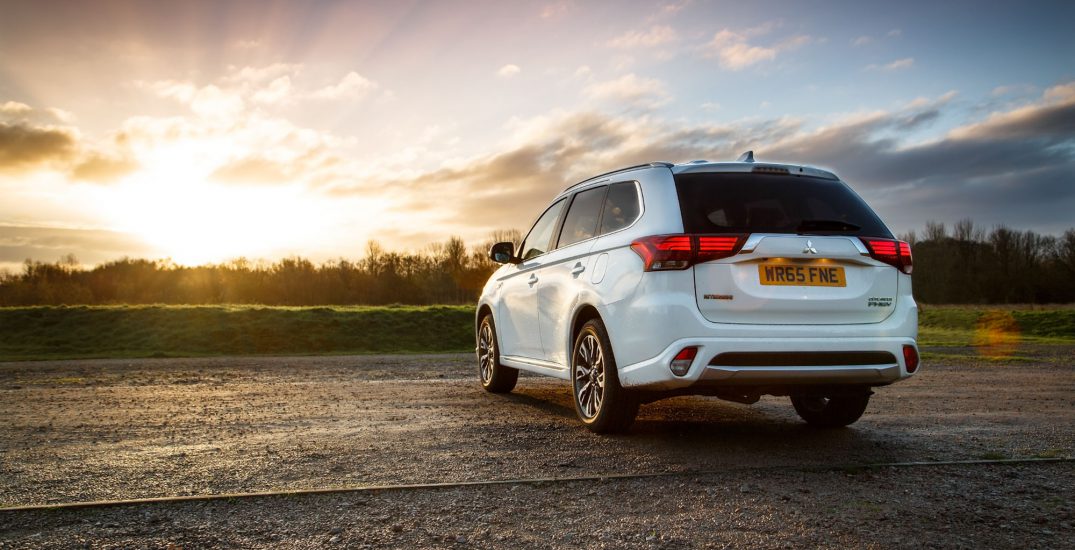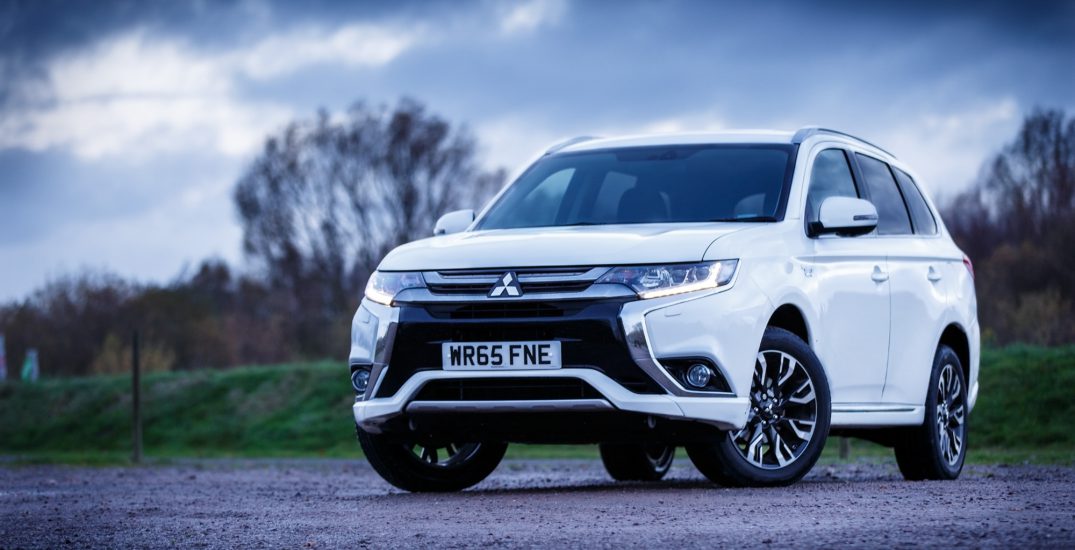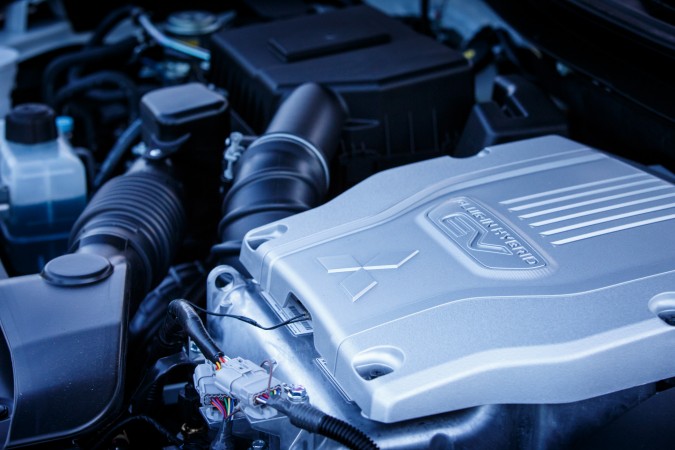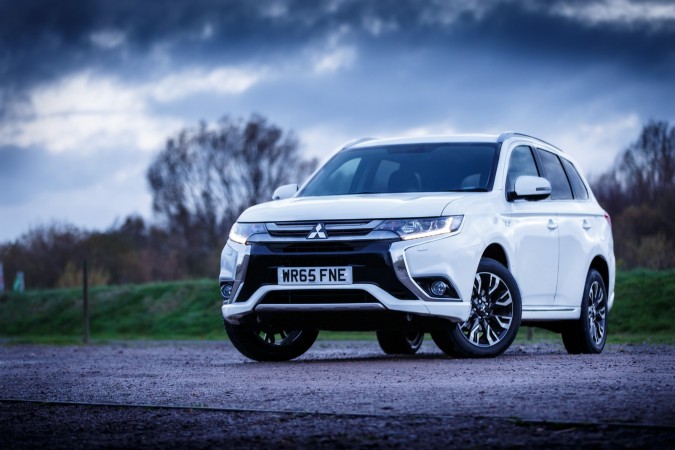Driven: Mitsubishi Outlander PHEV GX4h 2015 Review
After one week testing out the Mitsubishi Outlander PHEV GX4h here are my thoughts on this super-efficient plug-in hybrid electric vehicle.
What is the Mitsubishi Outlander PHEV GX4h all about?
You probably picture most PHEVs to be small, futuristic looking vehicles such as the Nissan Leaf and BMW i3, but the Outlander looks like a normal SUV. It doesn’t shout about being green, in fact most people probably wouldn’t even notice.
The Outlander PHEV GX4h starts at £29,249, inclusive of a £5,000 grant from the government. The car uses twin electric motors and a highly tuned 2.0-litre petrol engine. The PHEV can swap modes to instantly match the type of driving you are doing, to achieve superior fuel efficiency and optimised performance. The Outlander is said to be able to return 156mpg, at just 42g/km of CO2, and a combined range of 541 miles.
The model we have on test is the GX4h. This car includes an auto-dimming rear view mirror, heated steering wheel, the new Mitsubishi multi-communication system, 360° camera and super wide range LED headlamps with auto levelling.
How does it drive?
The Outlander provides a very different driving experience to most cars. For the majority of the time the Outlander PHEV GX4h will power the electric motors from the on-board batteries and so the car should be able to achieve around 32 miles on a full charge. And once the batteries do start to run out, the petrol motor will start up to work as a generator to re-charge the batteries. Then, when the car thinks it’s more efficient to power the wheels directly from the petrol engine, the car will automatically change the drivetrain around, seamlessly to the driver. This means that you are constantly being given the optimum efficiency mode for your driving conditions and fuel status.
One of the real beauties of PHEV is that when the engine is not running you get a very calm and smooth driving sensation. You don’t realise until you drive an electric car with a single gear how much vibration you get from an engine and gearbox, so if you are after a refined and calm driving experience then you really can’t beat a PHEV.
Other things you learn driving a PHEV is about brake regeneration. The Outlander is able to recoup energy during braking and convert that energy back into battery power. This means that if you are a bit smarter with how you drive you are able to generate power and increase your range. The car has two paddles either side of the steering wheel that adjusts the regeneration without using the brake pedal. On the maximum regen setting once you come off the accelerator the car will automatically start to slow and put the power back into the batteries. This means that during long downhill sections of road you would be able to generate more power.
The Outlander weighs around 1,845KG, which is a fair weight for the car, but because the batteries are in the floor the centre of gravity is fairly low. This means the SUV still feels OK in the corners. With a 0-60mph time of 11 seconds the car isn’t exactly fast, but from 0-30mph the car does move with a bit of urgency which feels good travelling around town.
What is it like inside?
Sitting inside the Outlander, you can tell that Mitsubishi have put in a huge amount of effort to update the interior. While it’s nowhere near as premium as a Range Rover, but then you wouldn’t expect it to be for the price, overall the car actually looks and feels pretty good inside. The car has heated leather seats and steering wheel, which during my testing made the car a great pleasure to live with.
I really liked the dials on the dashboard. Mitsubishi have removed the conventional rev gauge and replaced it with what I would describe as an efficiency meter. The dial shows how much energy you are using and also when you are generating energy back into the batteries. When driving the car this gives a clear indication that you are in something special.
The infotainment system, a lot like the L200, still feels a little after market and as if it was just slotted into the dashboard, but it does give some very useful information related to the charge of the car, the environment, and the performance metrics.
The rest of the car is very practical. The rear passenger space is OK – the rear seats can be angled back slightly, but the roof does come down a little into the passenger areas making it a little difficult for taller passengers.
The boot has an electrically operated tailgate making it easy to load and unload the boot, but it has to be said the operation of it is a little slow and you find yourself standing around waiting for it to open or close sometimes. Once open the boot space of the Outlander is brilliant, being a PHEV the boot space is often sacrificed for batteries, but not in this case. There is a lot of room with an extra few cubby holes underneath the floor and either side by the wheel arches too.
The Experience
Owning the Mitsubishi Outlander PHEV GX4h is a futuristic experience, it gives geeky thrills that may not be appreciated by all, but the technology that makes this car work is incredible. There is something about being able to use the Outlander as an everyday car and not having to pay for fuel that I really enjoyed.
Verdict
The Mitsubishi Outlander PHEV GX4h is a remarkable car. For only £33,899 you can have the GX4h, a hugely practical modern SUV that won’t cost you an arm and a leg to run. This price is achieved because the government are providing £5,000 grants that bring the price right down and make the car comparable with the diesel Outlander. The car is well put together, good looking and has a subtle element to it as it isn’t covered in green stickers shouting about its battery packs. I certainly found out why the Outlander is selling so well during my week with the car.
Video Highlights
Video Porduction: Daniel Barnett
Mitsubishi Outlander PHEV GX4h 2015
- Price: £33,899
- Engine: 2.0-litre Petrol
- Power: 149bhp
- Torque: 332Nm
- Transmission: Automatic single gear
- 0-62mph: 11 Seconds
- Top speed: 106mph
- Weight: 1,845g
- Economy: 156mpg
- CO2: 42g/km
Author: Paul Hadley
























